Are you struggling to master your tennis serve? Does it feel like no matter how hard you try, your serve just doesn’t have the power or accuracy you want? You’re not alone. Many tennis players find the serve to be the most challenging shot to perfect.
Imagine stepping onto the court, feeling confident and ready to dominate. Your opponent takes their position, and you prepare to serve. With a smooth motion, you toss the ball, swing your racket, and make perfect contact. The ball zooms over the net, landing right in the corner of the service box. Your opponent barely has time to react. Wouldn’t that feel amazing?
The good news is, achieving a powerful and accurate serve isn’t just a dream. With the right tennis techniques and practice, you can transform your serve from a weakness into your secret weapon on the court. In this step-by-step guide, we’ll break down every aspect of the perfect tennis serve, from grip to follow-through. Whether you’re a beginner or looking to improve your game, you’ll find valuable tips to take your serve to the next level.
Ready to serve up some aces? Let’s dive in and unlock the secrets to mastering your tennis serve.
Table of Contents
Introduction: Why Mastering Your Serve Matters
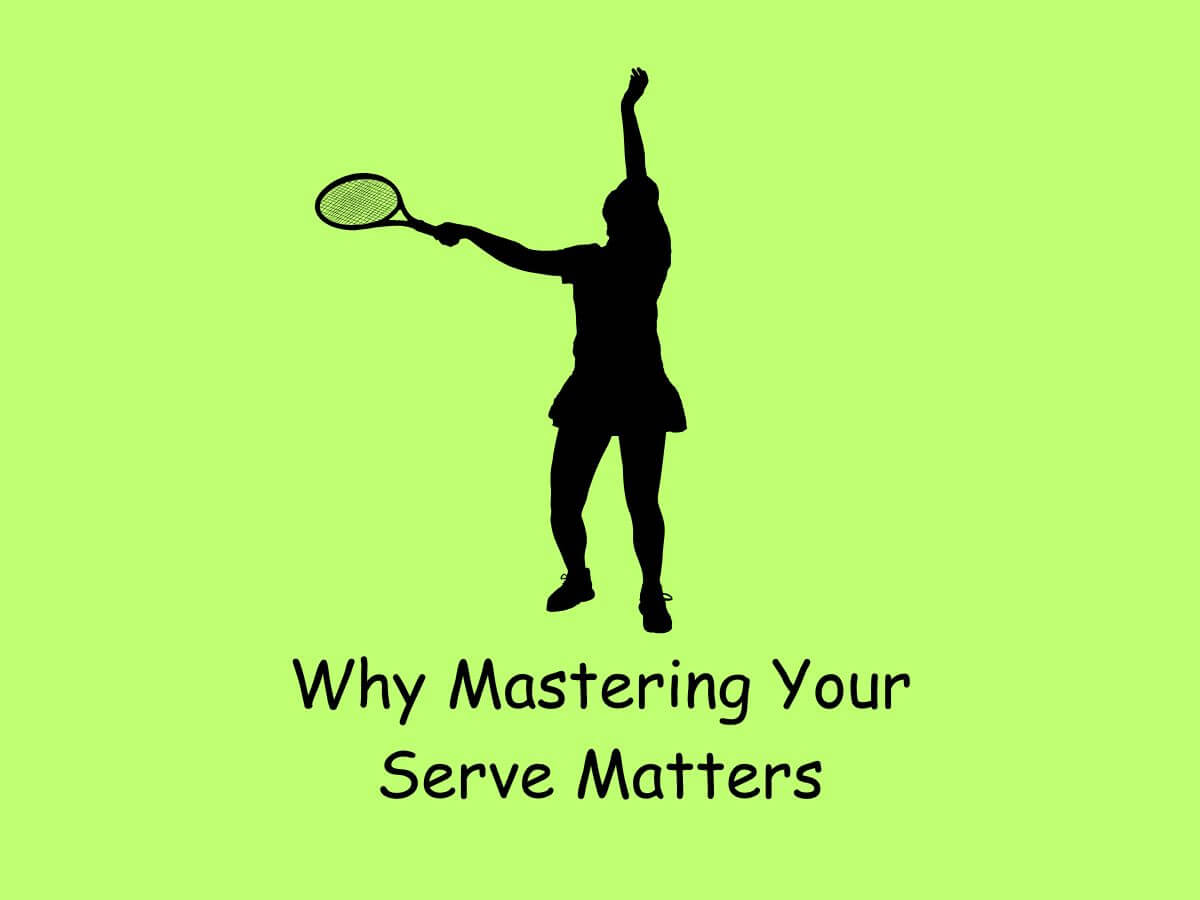
Your serve is the only shot in tennis where you have complete control. It’s your chance to start each point on your terms. A strong serve can give you a big advantage, putting pressure on your opponent right from the start. It can win you free points and set up easy volleys. On the other hand, a weak serve can leave you vulnerable and struggling to keep up.
Mastering your serve takes time and practice, but it’s worth the effort. A consistent, powerful serve can be your secret weapon on the court. It can help you win more games, sets, and matches. Plus, a good serve can boost your confidence and make the rest of your game stronger too.
In this guide, we’ll break down the perfect tennis serve step by step. Whether you’re a beginner or looking to improve your game, you’ll find tips to take your serve to the next level. We’ll cover everything from grip to follow-through, helping you develop a serve that will keep your opponents on their toes.
The Grip: Finding Your Sweet Spot
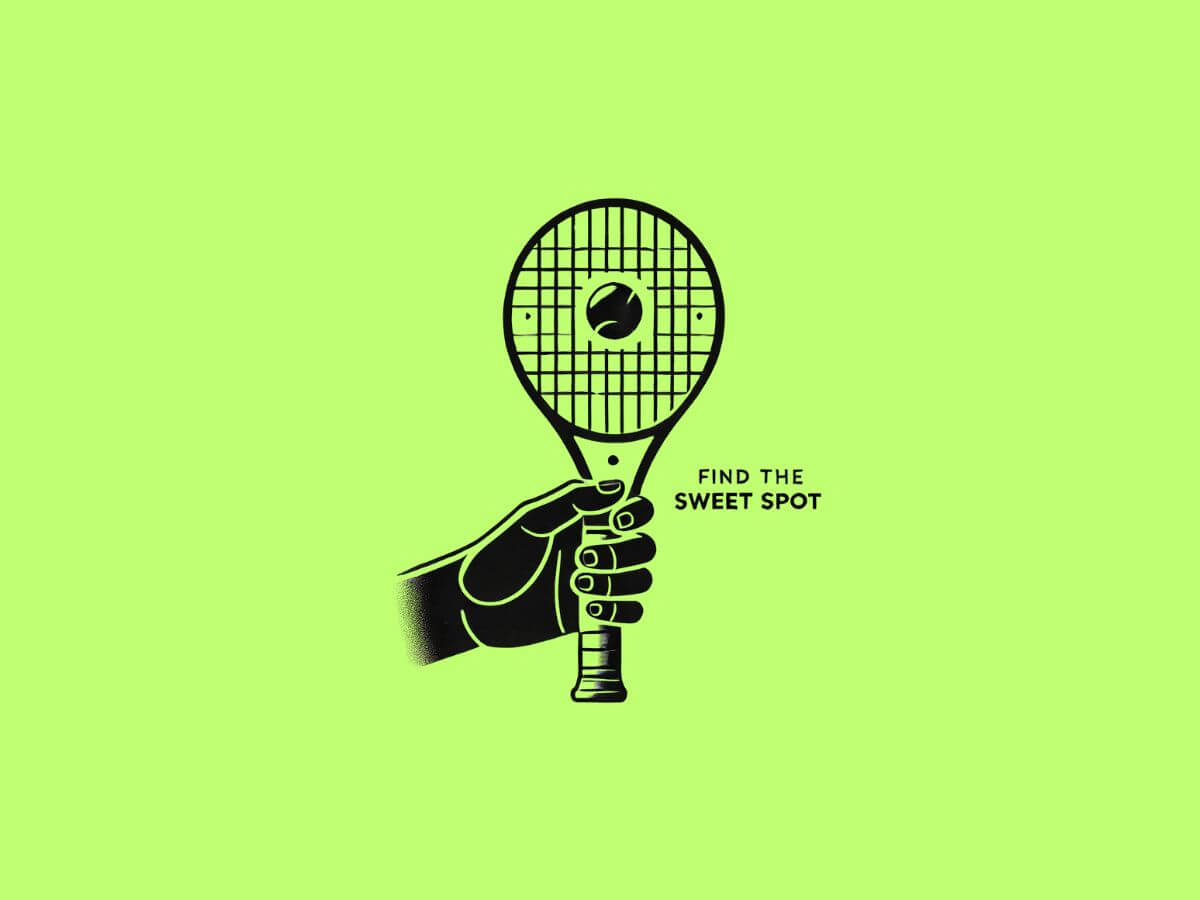
The foundation of a great tennis serve starts with the right grip. The best grip for serving is the continental grip. This grip is versatile and allows you to hit all types of serves – flat, slice, and kick – without changing your hand position.
To find the continental grip, imagine you’re shaking hands with your racket. Place your palm on the top bevel of the handle, with both your heel pad and index knuckle on the second bevel. This grip might feel strange at first if you’re used to other grips, but it’s crucial for developing a powerful and varied serve.
The continental grip enables you to use supination and pronation in your serve motion. These wrist movements help you generate more power and spin. As you practice with this grip, you’ll notice improved control and consistency in your serves. Remember, mastering the continental grip is a key step in developing a serve that can become your strongest weapon on the court.
Stance and Positioning: Setting the Foundation
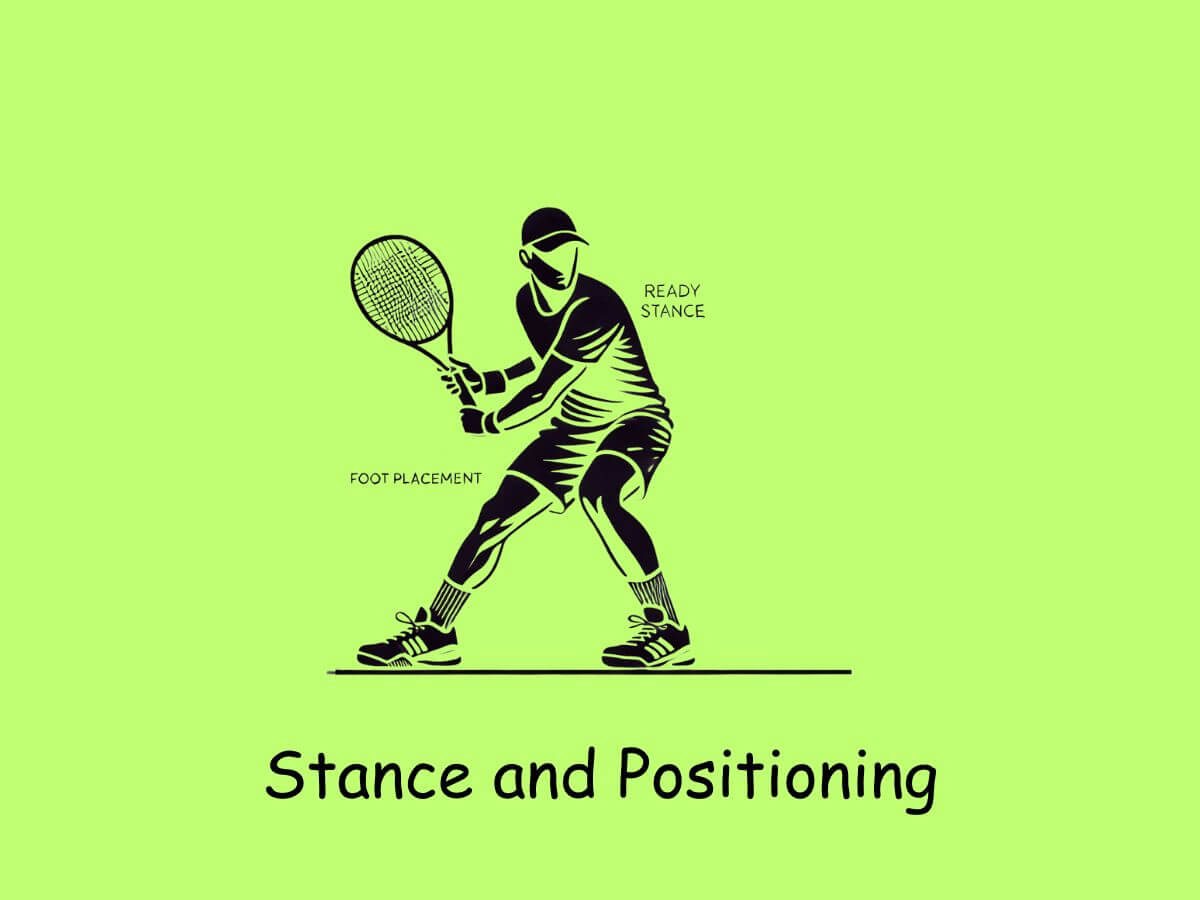
Your stance is crucial for a powerful and accurate serve. The most common and effective stance is the platform stance. In this position, your front foot points towards the right net post (for right-handers), while your back foot is parallel to the baseline.
For the perfect platform stance, align the toes of your back foot with the heel of your front foot. This setup provides stability and allows for a great shoulder turn, which is essential for generating power. Some players even prefer to slide their back foot slightly further back for an even better turn.
The platform stance offers several advantages. It enables you to turn your shoulders properly, making it easier to hit various types of serves, including the powerful kick serve. It also improves your trophy position, toss position, and overall serve mechanics. Remember, a proper stance sets the foundation for your entire serve motion, so take the time to get it right.
The Toss: Consistency is Key
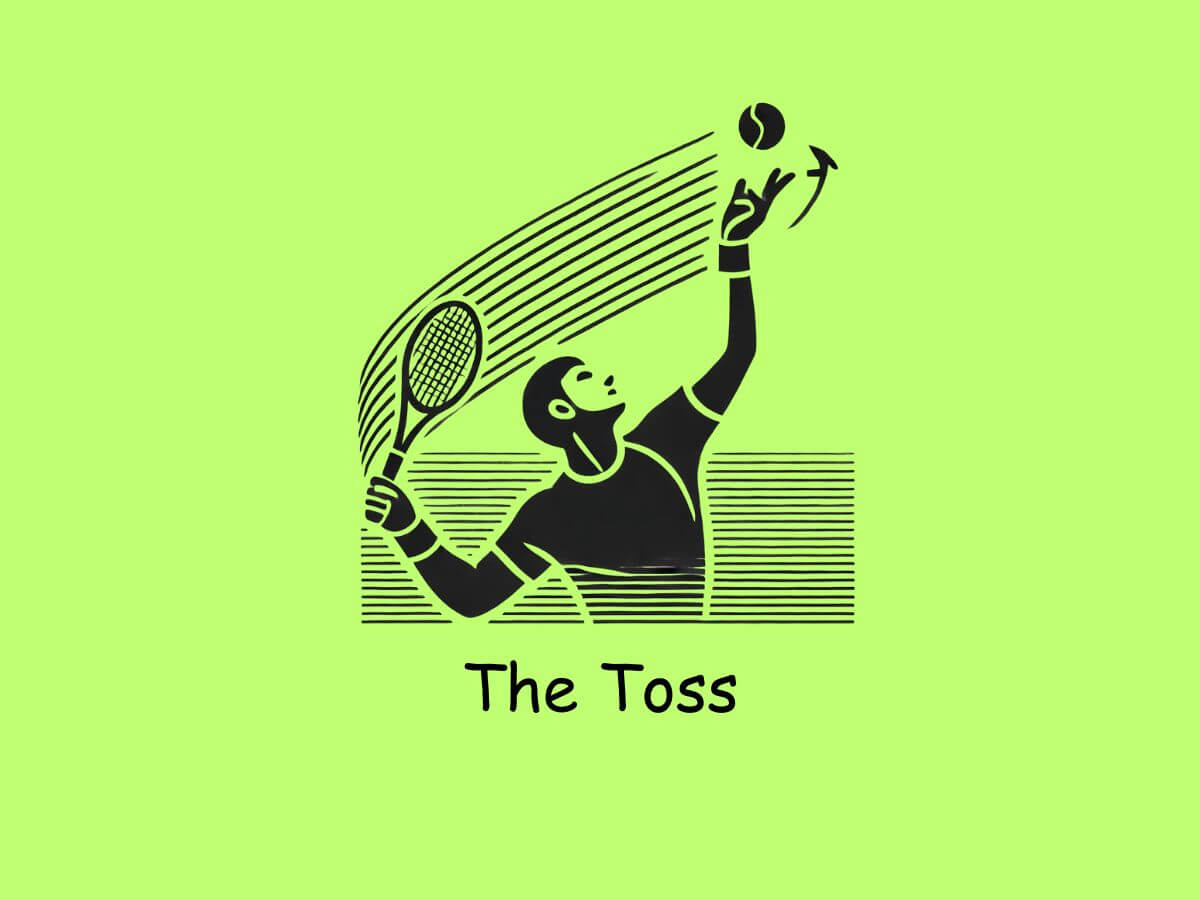
A consistent ball toss is crucial for a powerful and accurate serve. To achieve this, start by holding the ball in the first one or two links of your fingers, not in your palm. This reduces the chance of the ball rolling off your fingertips and spinning as you release it.
Next, focus on the speed of your toss. Move your tossing arm up slower than you normally would. A slower toss helps keep the ball from going all over the place or too high, which can cause timing issues. As you release the ball, think of holding a glass of water. Keep your palm facing sideways to prevent bending your elbow or flicking your wrist.
Finally, pay attention to where you’re tossing the ball. For most serves, you want the ball to go forward into the court. To achieve this, try the “J toss” technique. Bring the ball back in line with your back leg before tossing it forward. This creates a J-shaped motion that helps you toss the ball consistently into the court.
The Backswing: Loading Up for Power
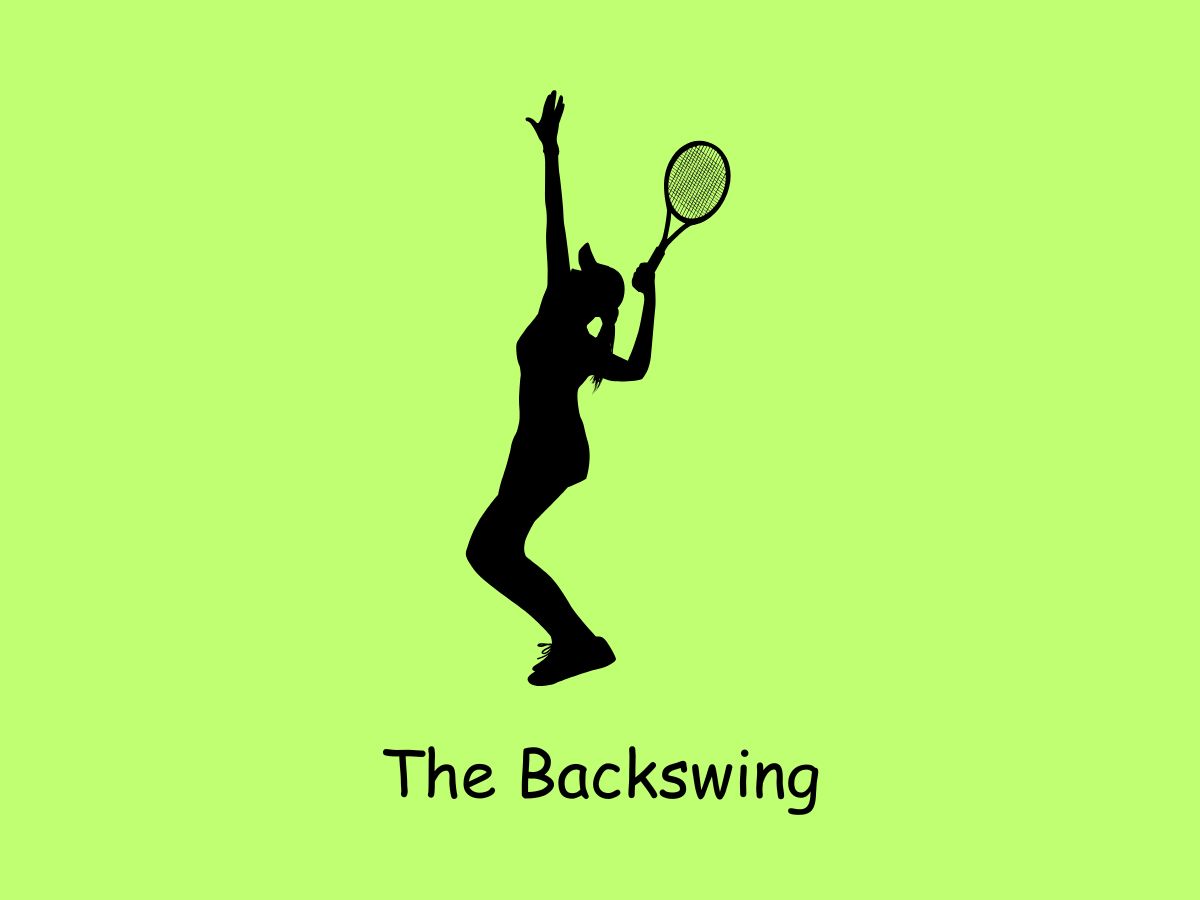
The backswing is where you start building power for your serve. As you come out of the bottom of your backswing, focus on delaying the forward movement of your arm. This creates stored energy in your shoulder joint and back.
As your body moves up and forward, try to hold your hand back. This delay in the racquet head movement actually creates a backwards twisting motion. The best servers, like Roddick and Sampras, make a significant backwards action with the racquet head as their body moves up towards the ball.
Remember, the more load you can build, the more stored energy you can release on the ball. This is why strength training and flexibility work are so important for improving your serve. The key is to synchronize your body movements – straightening your back and closing your shoulders – to maximize the potential energy you’re creating.
The Forward Swing: Unleashing Your Potential
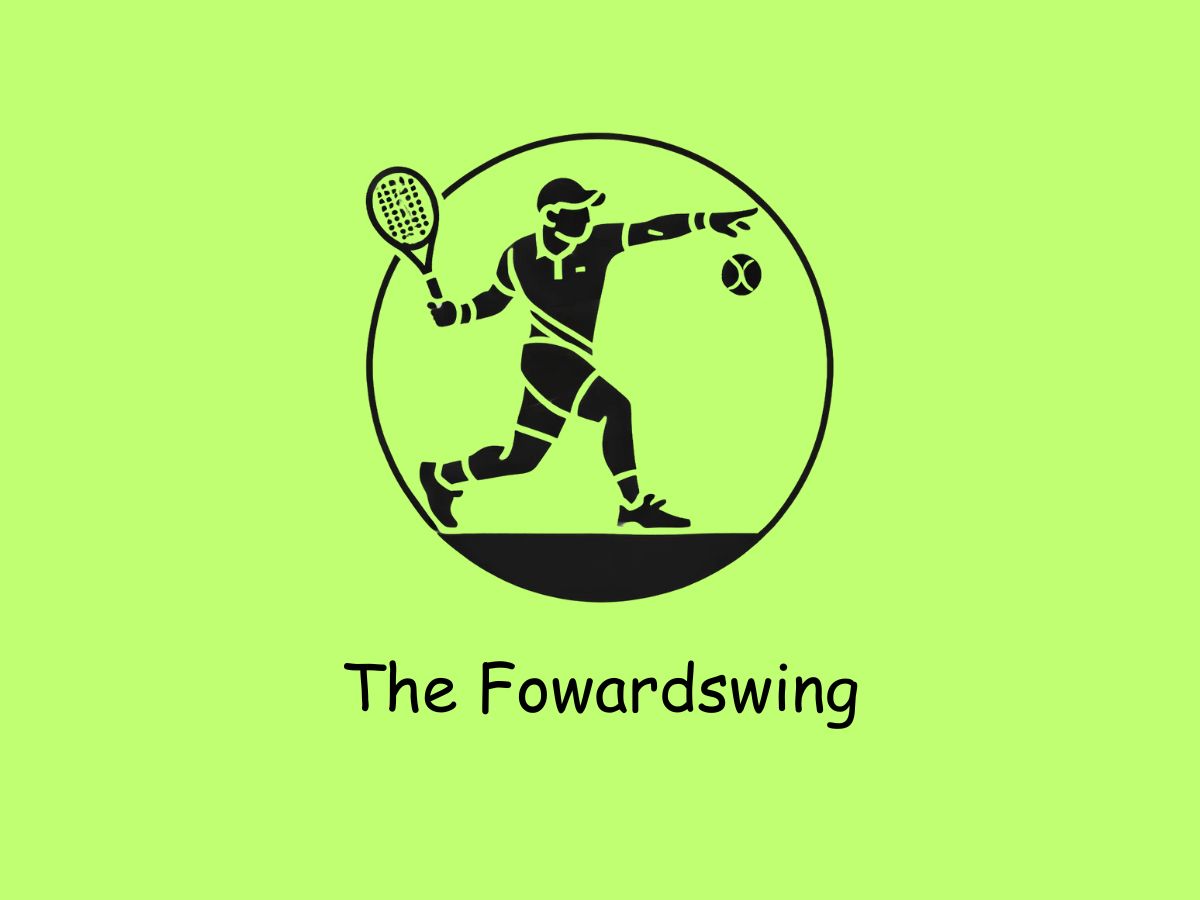
When it comes to the forward swing, many players make the mistake of trying to hit down on the ball. Instead, focus on swinging up and out. This doesn’t mean you’ll hit the ball up – it’s about using the upward part of your swing to generate maximum speed.
To practice this, try serving the ball horizontally towards the opposite back fence. This helps you develop a more fluid swing through the ball and serves as a foundation for more powerful serves. You can also practice by standing a few feet behind the baseline when serving. This forces you to swing up more to clear the net.
Remember, the goal is to accelerate the racquet as much as possible during the upward part of your swing. Your racquet will naturally start to point downwards at some point, but it will carry the speed you’ve generated through the rest of the swing. By focusing on this up and out motion, you’ll be able to add more power and consistency to your serve.
Contact Point: Hitting the Sweet Spot
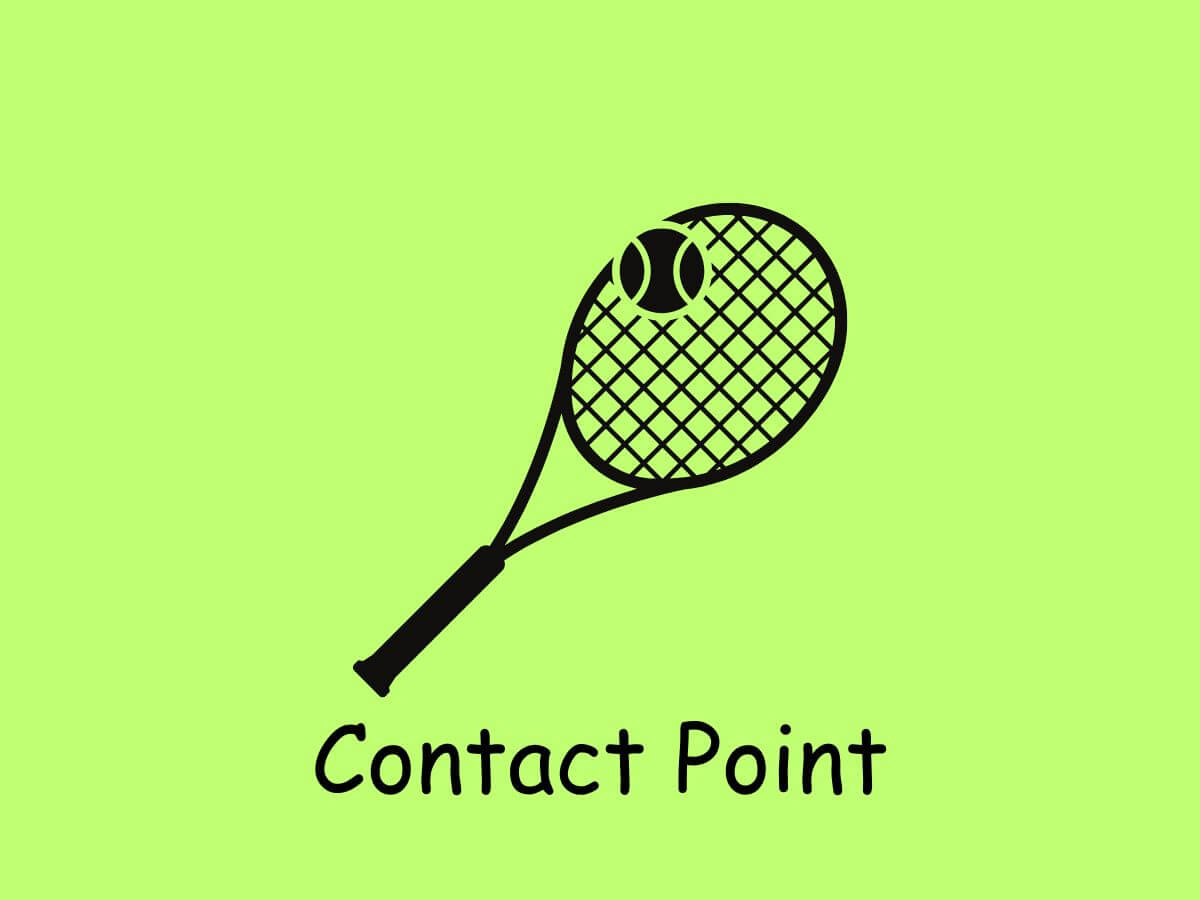
The contact point is crucial for an accurate and powerful serve. Your contact point should be slightly in front of you, not too far above or behind. This position allows for a natural swing and better control. For different types of serves, the exact contact point may vary slightly. A flat serve is hit high and in front, while a kick serve might be slightly behind your head.
Getting the right contact point helps you use your wrist effectively. This wrist action, called pronation for flat and slice serves or supination for kick serves, gives you more control over the ball’s direction. It’s like throwing a ball – you want to release it at just the right moment for the best result.
To find your ideal contact point, pay attention to how the ball feels when you hit it. When you hit the sweet spot, you’ll feel a smooth energy transfer to the ball. It might take some practice, but focus on where you’re hitting the ball and adjust based on how it feels. Remember, the perfect contact point is where your body’s movement and weight transfer produce the most power with the least effort.
Follow-Through: Finishing Strong
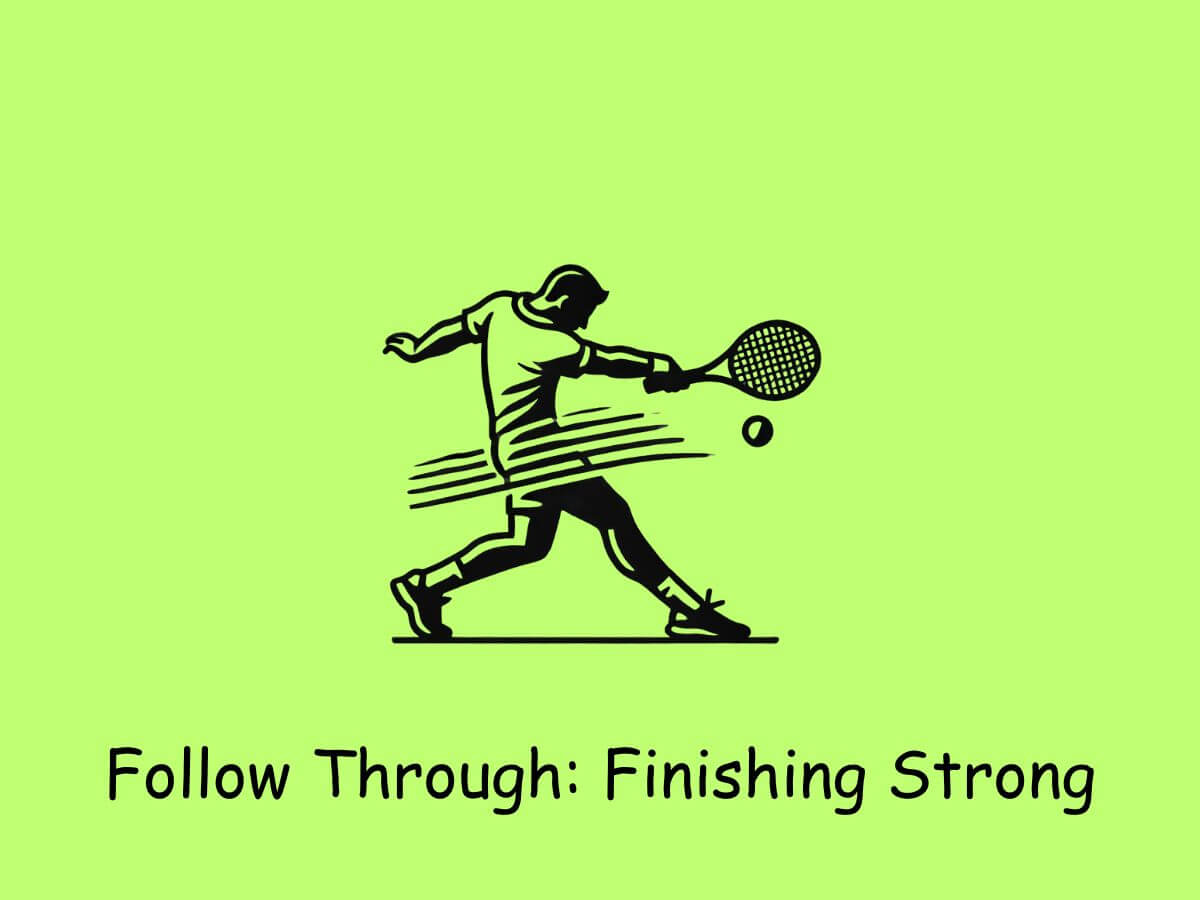
The follow-through in a tennis serve is more than just a fancy finish. It’s a crucial part of your serve that affects both power and accuracy. When you follow through, you’re allowing your racquet to keep moving after hitting the ball. This helps you maintain speed throughout the entire serving motion.
Think of your serve like throwing a punch. You wouldn’t stop your fist right at the target – you’d push through it. The same idea applies to your serve. As you hit the ball, let your racquet continue its path. Your arm should rotate internally, with the racquet facing the side fence before coming down. This motion helps you get more power and improves your overall serve performance.
However, it’s important to note that the follow-through doesn’t actually affect the ball once it has left your racquet. Its main purpose is to allow you to swing freely without slowing down before contact. If you try to stop your racquet at the moment of contact, you’ll likely slow down too early and lose power on your serve. So, focus on a smooth, continuous motion from start to finish.
Practice Makes Perfect: Drills to Improve Your Serve
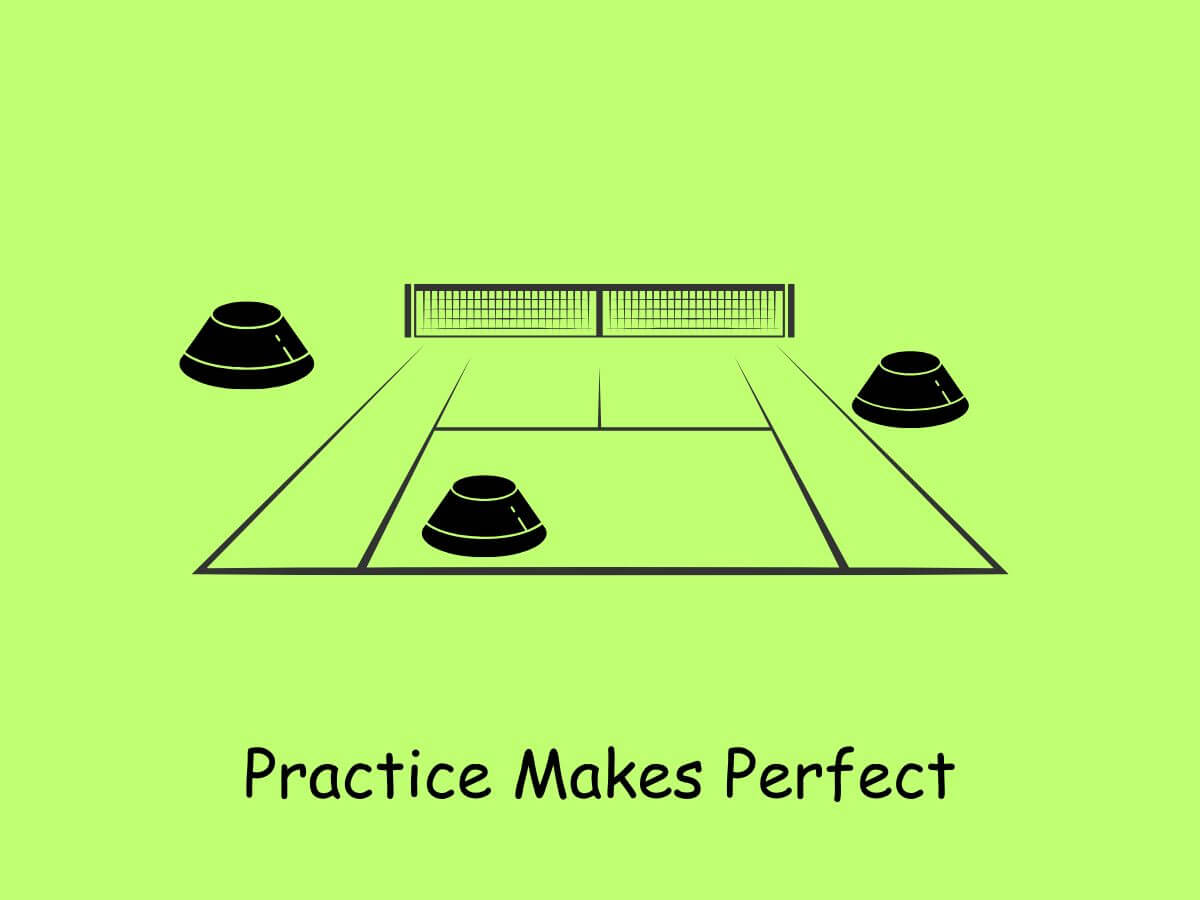
Improving your serve takes practice, but with the right drills, you can make faster progress. Here are three effective drills to try:
Serve from behind the baseline: Stand 3-6 feet behind the baseline when serving. This forces you to hit up on the ball more, which is crucial for a good serve. Hit at least 20 serves from this position before moving back to the baseline.
Use air targets: Set up imaginary targets in the service box. This helps improve your accuracy. Try to hit specific areas of the service box consistently.
Consistency challenge: Start at number 10. Every serve you get in, go up one number. Every miss, go down one. Try to reach 20 in as few serves as possible. This drill improves both your accuracy and consistency.
Remember, the key to improving is regular practice. Set aside time to work on your serve, focusing on these drills. With patience and persistence, you’ll see your serve become more powerful and accurate over time.
Conclusion
You now have the tools and knowledge to transform your tennis serve! It’s time to put these tennis techniques into action and start seeing real results on the court. Each adjustment, from your grip to your follow-through, plays a vital role in creating a serve that is both powerful and precise. Don’t just read through this guide; make it a part of your training routine.
Remember that mastering your serve is a journey. As you practice, be patient with yourself and celebrate small victories along the way. Each session on the court is an opportunity to refine your technique and build confidence in your abilities. Keep working at it, and soon you will surprise both yourself and your opponents.
If you find yourself needing additional guidance or have questions that weren’t answered here, please don’t hesitate to reach out. You can contact me at jaiden@jaidensmedia.com. I am here to support you on your path to becoming a better tennis player. Now, go out there, practice, and serve up some success!
FAQs
What’s the best grip for serving?
The continental grip is usually recommended. It’s versatile and allows you to hit flat, slice, and kick serves without changing your hand position.
Why is my ball toss so inconsistent?
Make sure you’re holding the ball in your fingertips and using a slow, controlled motion. Focus on releasing the ball at the same height each time.
What is the ideal stance for serving?
The platform stance, with your front foot pointing toward the net post, is considered the most effective.
How can I generate more power on my serve?
The secret lies in the backswing and forward swing. Delaying your arm during the backswing and swinging up and out during the forward swing helps in developing a more fluid swing through the ball and builds stored energy.
What does it mean to follow through correctly?
Let your racquet continue its motion after hitting the ball. This helps maintain speed and prevents slowing down prematurely.
Where should I aim when serving?
Setting up imaginary targets or trying to hit specific areas of the service box is a great place to start.
How do I stop hitting the net so often?
Focus on swinging up and out. By serving horizontally toward the opposite back fence, this motion makes it easier to clear the net.
Is strength training important for improving my serve?
Absolutely! Flexibility and strength training help you build more load, release more stored energy, and synchronize your body movements, maximizing the potential energy you’re creating.
How long will it take to see improvements in my serve?
It varies from person to person, but with consistent practice and the right drills, you should start noticing improvements within a few weeks.
What should my focus be?
Consistency. Every serve you get in, go up one number. Every miss, go down one. Try to reach 20 in as few serves as possible. This drill improves both your accuracy and consistency.
